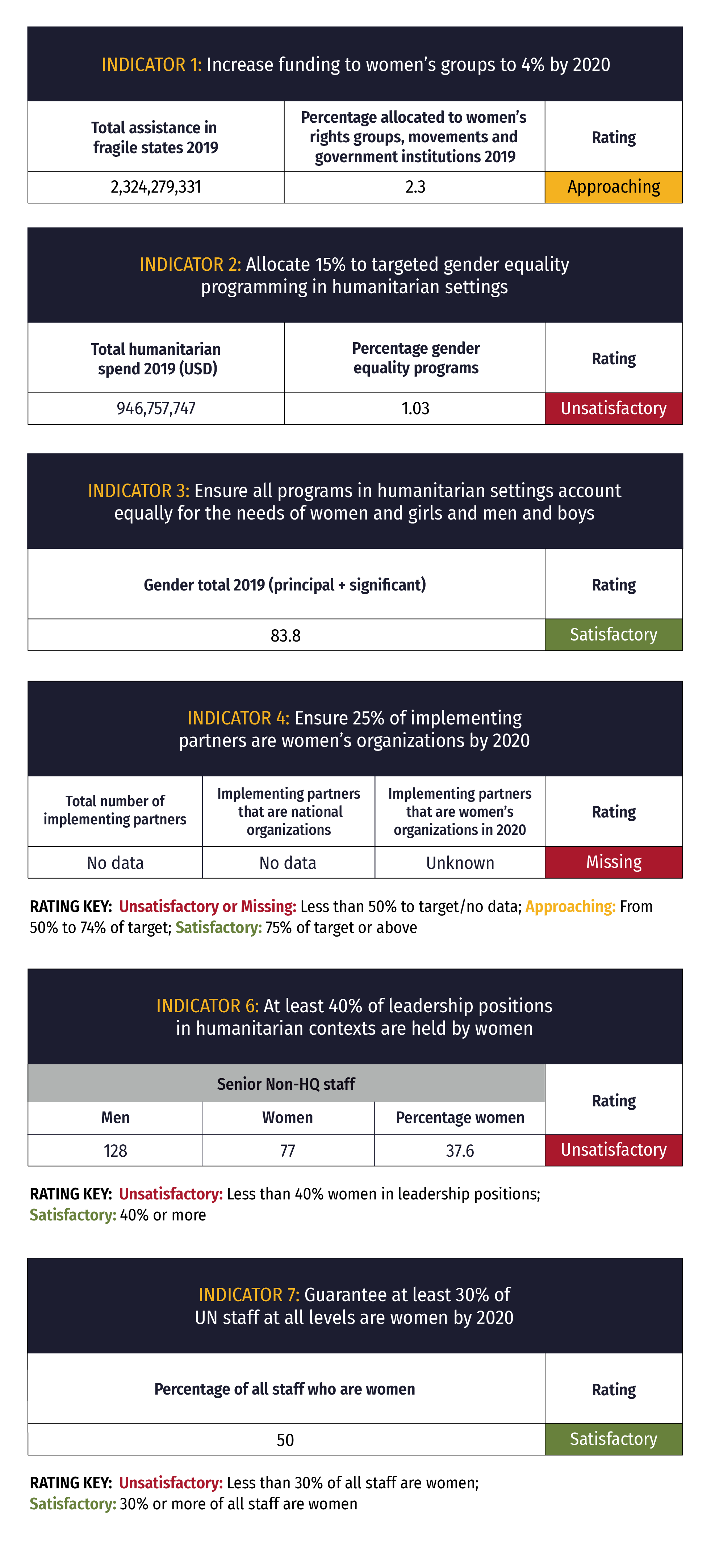The following information was submitted by several UN agencies reviewed in the report to provide additional context and data.
How United Nations Development Programme (UNDP) Scored on Our Report Card

What UNDP Is Doing to Support Women and Girls in Crisis
UNDP has made Gender Equality and Women’s Empowerment (GEWE) a strategic priority, developed sufficient institutional guidance and tools to mainstream gender in the program cycle and established an accountability system to track its performance. UNDP is now developing the corporate structures to better support GEWE in crisis prevention and response through a new Gender and Crisis Facility, which will help to support better measurement of disaggregated indicators, among other things.
As reported in UNDP’s Annual Reports on its ongoing Gender Equality Strategy (2017–2021), UNDP continues to make progress to advance Gender Equality in crisis settings in the following areas:
- UNDP continues to work to improve women’s resilience and participation in economic recovery and in building social cohesion. In 2019, UNDP worked in 26 countries to ensure that 1.7 million women gained access to jobs and improved livelihoods in crisis or post-crisis settings. In Yemen, for example, at least 34% of direct beneficiaries of job creation and conditional cash transfers were women.
- UNDP supports countries to adopt legal and regulatory frameworks that enable civil societies, notably women’s groups, to become strong implementing partners. This work is currently being carried out in countries as diverse as the Central African Republic, Kenya, Sierra Leone, Somalia, Eswatini, Chad, Uganda, Ethiopia, Angola, Zimbabwe and Zambia. UNDP reports on these interventions under the current Strategic Plan indicator “Number of countries that adopt and implement, with UNDP assistance, legal and regulatory frameworks that enable civil society to function in the public sphere and contribute to sustainable development.” UNDP will make the necessary efforts to give more visibility in its next Strategic Plan (2022–2025) to the work with women’s groups.
- UNDP continues to increase expenditures on projects that contribute to gender equality. In 2019, the financial resources allocated to projects with gender equality as a principal objective in the 57 countries of the OECD list accounted for 9.73% of total programmatic resources, which is an increase from 9.06% in 2018. UNDP will make sure that these figures are adequately reflected in the International Aid Transparency Initiative portal.
- UNDP has achieved unprecedented gender parity at senior management level. The Assistant Secretary General team is composed of 50% women and 50% men and Resident Representative appointments constitute 51% women and 49% men. In the 57 countries of the OECD fragility list, women currently occupy 41 posts (7%) of D2 positions and 40 posts (3%) of D1 positions.
